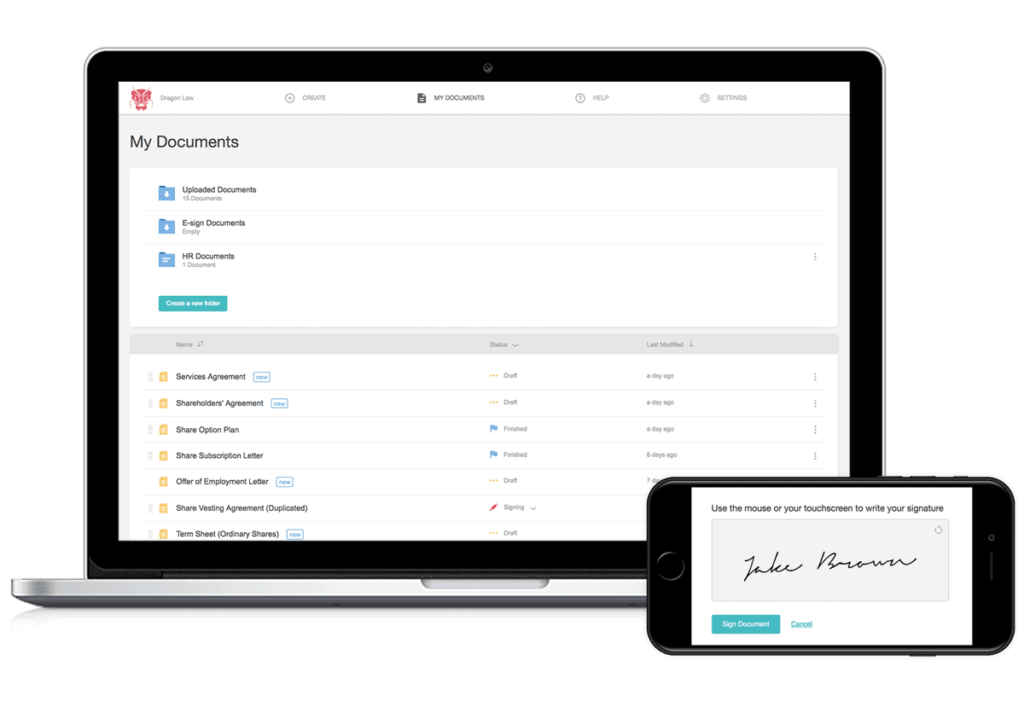Table of Contents
Need to raise capital to expand your small business or launch a new idea? Earlier this week, Zegal organised a session on Fundraising Know-how for Your Business as part of our Legal Academy Series, with our event partner DBS. Apart from the common issue of fundraising that both startups and small businesses face, we discussed an approach to raising capital that is growing in popularity – crowdfunding.

In case you missed it, here is what we discussed during the session:
The Basics of Fundraising Instruments
C-u Pinn Koh, Director of Arielle Law Corporation, first introduced us to the types of fundraising instruments available to businesses. There are two main fundraising avenues: equity financing and debt financing.

What is Equity Financing?
Equity financing is essentially raising capital by selling shares in your company to investors. There are two main kinds of shares that companies can issue: ordinary shares and preference shares. By default, all issued shares are ordinary shares. Ordinary shares entitle the shareholder to a claim over the income and assets of the company in the event of winding up or liquidation. In some cases, you may want to issue preference shares to your shareholders, which would give the shareholder additional rights and benefits, such as additional voting rights or a fixed rate of return to create certainty on your shareholder’s return on investment (ROI).
Preference shares may be cumulative or noncumulative:
- Cumulative preference shares: If the fixed dividend entitlement of any financial year is unpaid, the dividend amount that is owed accrues and must be paid in the future. All accumulated dividends must be paid to the preference shareholders before distribution of dividends to ordinary shareholders;
- Noncumulative preference shares: If a dividend is not paid in any financial year, it will be deemed “forfeited”.
The benefit of raising capital through preference shares is that unlike a loan, you don’t have to pay a fixed interest rate.
There are some other kinds of preference shares that your company may want to issue:
- Redeemable preference shares: Shareholders are entitled to repayment of their invested amount at a fixed date;
- Convertible preference shares: Shareholders are granted an option to convert their preference shares into ordinary shares on a pre-determined conversion formula;
When issuing preference shares, you would need a Term Sheet that sets out key terms such as dividend rights, liquidation priority, pre-emptive rights, voting rights and conversion, if any.
RELATED READING: Early Stage Funding with Ordinary Shares
What is Debt Financing?
Debt financing refers to borrowing money from an outside source, such as a bank, with the promise of paying back the borrowed amount plus any agreed-upon interest at a later date. Taking out a loan from a bank typically requires your company to have collateral.
Some legal instruments by which you can take out loans include:
- Promissory Note: A simplified loan agreement that records the terms of a loan;
- Convertible Note: A debt instrument that converts into equity under predefined conditions.
- Factoring Agreement: An increasingly popular mode of financing for companies that have been in operation for at least two years.
Promissory Notes are signed contracts in writing with a definite and unconditional express promise by a specified payer to pay a certain quantum of money to a specified payee. While the absence of a date does not invalidate a Promissory Note, this may impede the calculation of interest.
When using a Convertible Note, it is important that you have in place a Convertible Note Subscription Agreement that allows your investor to subscribe for Convertible Note(s) and a Convertible Note Certificate that evidences the noteholder’s title to the Convertible Note.
Factoring is an arrangement where the factor purchases the outstanding invoices and claims from your company and procures the legal right to claim and collect the monies that are due and outstanding under the accounts receivables. This allows you to outsource your claims and debt collection and gives you instant liquidity.
An advantage of debt financing is that it gives the company instant liquidity without diluting your ownership interest. However, note that unlike equity, debt must be repaid at some point. Even during difficult financial periods, your company still has an obligation to pay the interest rates or you would default on your loan. There are typically also restrictions that come with debt financing, such as the requirement that you seek the lender’s permission should you wish to pursue further fundraising activities. This may curtail your ability to raise capital.
An Introduction to Crowdfunding
Following on from the discussion on fundraising instruments, founder and CEO of Aces Crowdfund Alloysius Heng shared about crowdfunding as a potential avenue for fundraising.

Simply put, crowdfunding, also known as crowdsourcing, is the process of a company publishing via a platform a request for funding and allowing interested investors to advance a portion of the amount that the company is seeking. Crowdfunding platforms typically have a less stringent process for starting a crowdfunding campaign. Rather, it is the potential investors who contribute to your crowdfunding campaign that make the decision on whether to invest based on their evaluation of your company’s proposal, track record and team. The reach of a crowdfunding campaign is also much wider, as potential investors from all around the world with access to online crowdfunding platforms will have the opportunity to view your campaign. Crowdfunding can be done via either equity financing or debt financing.
In Singapore, crowdfunding is regulated by the Monetary Authority of Singapore (MAS) with the issuance of the securities-based crowdfunding (SCF) guidelines in June 2016. All companies that wish to operate a SCF platform must acquire a Capital Markets Services License (CMSL) and licensed crowdfunding platform operators must abide by the strict rules laid out by MAS and in the Securities and Futures Act. This regulatory system ensures that certain practices are followed, such as having the crowdfunding platform hold funds in an escrow account before they are directly released to the fundraiser. This reduces the risk of funds getting misappropriated.
Venture Capital or Crowdfunding – Which Is Better?
One common avenue of fundraising that companies turn to is venture capital. This can be beneficial as many VC firms take a hands-on approach and have professional staff that can help you build your expertise. Unfortunately, VC firms are typically inundated with tons of projects which makes securing VC funding a competitive process. VCs also typically subject its startups to a stringent due diligence process that may take 3 to 6 months before deciding to extend funding in stages.
RELATED READING: Angel investors vs venture capitalists
On the other hand, crowdfunding is a much simpler process. The company retains control over decisions such as whether to structure their crowdfunding opportunity as debt or equity financing. Crowdfunding is usually more suitable for companies which only require smaller amounts of funds, below the minimum loan amounts set by traditional lending institutions such as banks. Crowdfunding platforms typically provide companies advice on how to meet their crowdfunding targets across various stages.
Note, however, that crowdfunding is more suitable for certain types of projects and industries. For instance, crowdfunding may not be suitable for more complex projects for which potential investors may not have the requisite specialised knowledge.
How to go about crowdfunding?
While the exact process for executing a crowdfunding campaign varies depending on which crowdfunding platform you utilise, a typical process goes as follows:
- Register your interest to raise funds via a crowdfunding platform;
- Prepare and submit all the relevant documents for the crowdfunding platform’s review and risks scoring;
- Meet with the team and pitch your project;
- Decide how your company would like to raise funds (i.e. debt or equity financing);
- Develop the marketing and information package to be listed on the platform;
- Upload the information onto the platform;
- Monitor your campaign progress;
- Complete the escrow account conditions;
- Receive your funds, monitor and execute your obligations.
As the startup scene grows more competitive, crowdfunding democratises access to capital and new ideas, a phenomenon amplified by the arrival of the digital age. Here is a list of popular crowdfunding platforms that you can use for your startup.
The Difference Between Kickstarter, Gofundme and Indiegogo
Adapted from Grasshopper.com
- Specifically supports creative projects such as art, music, fashion and film
- All or nothing funding, meaning –
- The backers’ credit cards will only be charged if the funding goal is reached
- If the funding goal is not reached, no one is charged (this is good because backers typically expect finished projects even if they aren’t fully funded)
- Fees –
- Kickstarter has a 5% fee on all successfully raised funds.
- There are no fees if the campaign fails
- The typical backer is not seeking to profit but rather simply want to see the project made
- Only about 65% of Kickstarter projects ultimately get fully funded before the campaign deadline
- All manner of projects are supported on Gofundme, but it is typically used for personal causes and life events such as education, medical treatment, etc.
- You keep any funds that are raised
- Fees are the same whether funding goals are fully or partially reached
- Donors may still expect results despite incomplete funding
- The platform does not have its own community unlike other crowdfunding sites, but the campaigns are easily shareable.
- Campaigns on this platform usually have lower funding goals
- You have the choice between all or nothing funding
- When you choose the “keep what you raise plan”, fees are incurred regardless of whether you reach your goal or not
How to draft the required contracts?
Accessing and managing legal has always been difficult and expensive. It’s the last thing you want to worry about when you’re trying to raise capital. Zegal is cloud legal software with your business at the core, we understand your difficulties and help you solve these in three ways:
- Smart end-to-end legal software that allows you to create, e-sign, manage and store legal documents in the cloud;
- Seamless integrations with your existing apps, including cloud storage solutions such as Google Drive and cloud accounting software Xero;
- Connect SMEs and lawyers through the Zegal app so that you can get the legal advice that you need in a timely manner.
We understand that running a business can be hard, and we are here to equip you with the tools to simplify the process. Fundraising is just one of the aspects of running a business, and we can’t wait to bring you more insights on a whole host of other topics in the upcoming sessions of our Legal Academy Series.

Claim your free trial. Start drafting legal documents with Zegal today.
Do you have any topics in mind that you want to hear about at future Zegal events?
Share with us in the comments below!
Alex Tanglao
Alex Tanglao is a seasoned professional with expertise in startups, legal technology, and business management. Alex has held leadership roles, including Director of Strategy & Operations at Elevate Digital, where he streamlined operations and managed teams, and Director of Ecommerce at Allies of Skin, driving global growth. Alex served as Marketing Manager at Zegal, driving legaltech and educating businesses on startup legal topics. With a background in content strategy from LawPath, Alex combines a deep understanding of legal services with operational excellence and innovative marketing strategies to help businesses thrive in dynamic, fast-paced environments.






